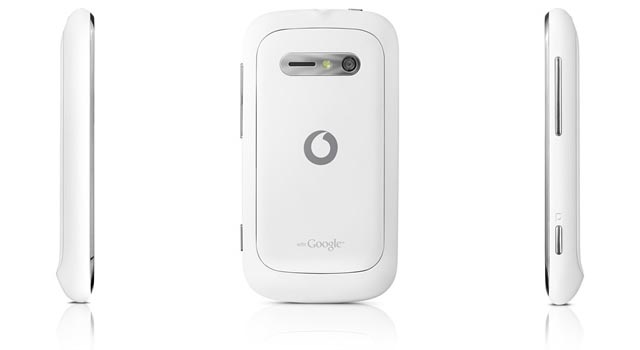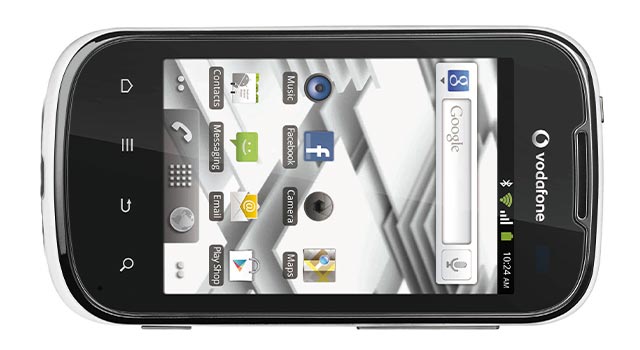
Costing just R1 299, the Vodafone-branded Smart II may be cheap. But it has plenty to offer. Often lauded as the solution to get Africa’s unconnected online, budget smartphones are also great for students or the cash-strapped, providing all of the core functionality of far more expensive devices at a fraction of the cost.
The Smart II is powered by Android — Gingerbread 2.3.7 — and is devoid of the overlays most manufacturers like to add to the Google software. There are a couple of links to Vodafone Web pages masquerading as applications but they’re easy to ignore. A glance beneath the battery reveals that the Smart II is a rebranded Alcatel V860.
In addition to the usual charger, USB cable and headphones, the Smart II includes three interchangeable rear covers in different metallic shades. Like the rear cover it comes fitted with, the interchangeable ones consist of two parts: a rim and a back plate.
Despite the two-part approach, the Smart II feels sturdy and the responsiveness of its 3,2-inch, 320×480-pixel display belies its budget price tag. It’s no Samsung Galaxy S3 or Apple iPhone, but for those making the step up from a feature phone it offers an excellent user experience, for the most part.

One of the only obvious indications that the Smart II carries a small price tag is its 800MHz processor, which shows its limitations when trying to handle media-intensive Web pages. Otherwise, the device is responsive, whether it’s running multiple apps or moving between the five home screens, perhaps thanks to its 512MB of RAM. Opening documents with the supplied file viewer app is a slow process, but at least the Smart II is able to do so in a pinch.
Although there’s only 150MB of built-in storage space the Smart II has a microSD slot and comes with a 2GB card.
Like most Android phones, the Smart II is charged by means of a micro-USB port and it ships with a USB to micro-USB cable for data transfer. The same cable plugs into a wall plug to serve as the mains charger.
The Smart II’s camera includes an excellent software interface with one-touch access to settings such as exposure compensation, geo-tagging, white balance and flash. It’s a fixed-focus 3-megapixel affair, so it’s not much good at close range or in poor light, but with its LED flash and a range of digital filters on offer it does at least keep up with its peers.
There’s a dedicated shutter release button on the right-hand side of the phone, below the volume rocker, and there’s the option to shoot video, albeit it at a paltry 20 frames a second at VGA resolution.
With Swype’s predictive text app, which allows you to type by swiping a finger between the letters of a word rather than tapping them out individually, typing is unexpectedly easy on the Smart II. It may take a bit of getting used to, especially if coming from a physical keyboard or larger device, but automatic corrections are usually accurate and the keyboard works in landscape mode.
All the of the usual smartphone connectivity features are present and accounted for: accelerometer, Bluetooth, Wi-Fi, 3G/HSDPA and FM radio. Remarkably, given the price, the phone includes a full assisted GPS.
The brightly coloured alternative covers and preinstalled Facebook widget suggest the Smart II is aimed at the youth market, but it’s also an excellent device for those looking to move up the mobile food chain. It’s a fantastic introduction to the capabilities of a smartphone, while still managing to feel like a more expensive device. For the price, there’s very little to dislike about the Smart II. — (c) 2012 NewsCentral Media




